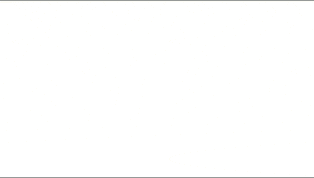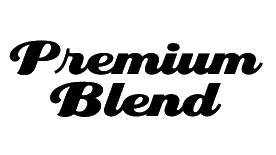Related Research Articles

Seven Days is an American science fiction television series based on the premise of time travel. It was created by Christopher and Zachary Crowe, and aired on UPN from October 7, 1998 to May 29, 2001.

A Rube Goldberg machine, named after American cartoonist Rube Goldberg, is a chain reaction–type machine or contraption intentionally designed to perform a simple task in an indirect and (impractically) overly complicated way. Usually, these machines consist of a series of simple unrelated devices; the action of each triggers the initiation of the next, eventually resulting in achieving a stated goal.

Operation Ivy was the eighth series of American nuclear tests, coming after Tumbler-Snapper and before Upshot–Knothole. The two explosions were staged in late 1952 at Enewetak Atoll in the Pacific Proving Ground in the Marshall Islands.
Hollywood Science is an Open University TV programme produced for the BBC, which attempted to determine whether or not scenes in various films were scientifically credible. In the show, presenter Robert Llewellyn and scientist Jonathan Hare look at the science behind a scene in a film. They experiment or perform calculations, to see how the scene would work in real life. The scene is then given an accuracy rating. The approach is similar to that of the Bad Astronomer, who also uses films as a vehicle to teach science. The presence of Robert Llewellyn means the tone of the show is fairly light-hearted.
Freakazoid! is an American superhero comedy animated television series created by Bruce Timm and Paul Dini and developed by Tom Ruegger for the Kids' WB programming block of The WB. The series chronicles the adventures of the title character, Freakazoid, a crazy teenage superhero who fights crime in Washington, D.C. It also features mini-episodes about the adventures of other superheroes. The series was produced by Warner Bros. Animation and Amblin Television, being the third animated series produced through the collaboration of Steven Spielberg and Warner Bros. Animation after Tiny Toon Adventures and Animaniacs.
Cyberchase is an animated science fantasy children's television series that aired on PBS Kids. The series centers around three children from Earth: Jackie, Matt and Inez, who are brought into Cyberspace, a digital universe, in order to protect it from the villainous Hacker. They are able to foil Hacker's schemes by means of problem-solving skills in conjunction with basic math, environmental science and wellness. In Cyberspace, they meet Digit, a "cybird" who helps them on their missions.

Operation Castle was a United States series of high-yield (high-energy) nuclear tests by Joint Task Force 7 (JTF-7) at Bikini Atoll beginning in March 1954. It followed Operation Upshot–Knothole and preceded Operation Teapot.

Katharine Ellen Sykes is a British physicist, broadcaster and Professor of Sciences and Society at the University of Bristol. She was previously Collier Professor of Public Engagement in Science and Engineering, from 2002 to 2006. She has presented various BBC2 and Open University TV series, including Rough Science, Ever Wondered about Food, Alternative Therapies. Alternative Medicine and presented for the documentary television miniseries Brave New World with Stephen Hawking in 2011.

Premium Blend was a stand-up comedy series created and directed by Paul Miller that aired on the American cable television channel Comedy Central from 1997 to 2005. In 2005 the show was changed, and now known as "Live at Gotham".

Holmes on Homes is a Canadian television series featuring general contractor Mike Holmes visiting homeowners who are in need of help, mainly due to unsatisfactory home renovations performed by hired contractors.
A flashforward is a scene that temporarily takes the narrative forward in time from the current point of the story in literature, film, television and other media. Flashforwards are often used to represent events expected, projected, or imagined to occur in the future. They may also reveal significant parts of the story that have not yet occurred, but soon will in greater detail. It is similar to foreshadowing, in which future events are not shown but rather implicitly hinted at. It is also similar to an ellipsis, which takes the narrative forward and is intended to skim over boring or uninteresting details, for example the aging of a character. It is primarily a postmodern narrative device, named by analogy to the more traditional flashback, which reveals events that occurred in the past.
The use of nanotechnology in fiction has attracted scholarly attention. The first use of the distinguishing concepts of nanotechnology was "There's Plenty of Room at the Bottom", a talk given by physicist Richard Feynman in 1959. K. Eric Drexler's 1986 book Engines of Creation introduced the general public to the concept of nanotechnology. Since then, nanotechnology has been used frequently in a diverse range of fiction, often as a justification for unusual or far-fetched occurrences featured in speculative fiction.
Human genetic chimerism, which can not only cause a wide range of illnesses but also lead to the same person having more than one profile in genetic fingerprinting, has served as a plot device in many works of fiction. Most known examples are subsequent to the 2004 book Free Culture, where author Lawrence Lessig digresses briefly to describe chimerism and suggest that it could, and had yet to, be well used as a television plot device.
Doing DaVinci is a popular science television program originally aired on the Discovery Channel in which the hosts attempted to create many of Leonardo da Vinci's inventions. The show aired on a weekly schedule with the first episode broadcast on April 13, 2009.

Ugly Americans is an adult animated sitcom created by Devin Clark and developed by David M. Stern. The series focuses on the life of Mark Lilly, a social worker employed by the Department of Integration, in an alternate reality version of New York City inhabited by monsters and other creatures. Daniel Powell served as executive producer and Aaron Augenblick as supervising producer and animation director.
Agent Helena George "H.G." Wells is a fictional character on the American television series Warehouse 13, played by Jaime Murray. Agent Wells was a recurring guest character of the series, playing the major antagonist of Season 2 and appearing alongside the agents Myka Bering and Pete Lattimer. Wells was portrayed as having a genius-level intellect and a methodical nature besides being an inventor, author, and a former agent of the fictitious Warehouses 12 and 13. Helena Wells is revealed in the show to be the true author of the famous H.G Wells novels however as she was a woman chose to use her brothers face to publish the books.
Dr Mike Bullivant is a British organic photochemist known for his appearances on all six series of BBC's Rough Science. Bullivant studied Chemistry at the University of Wales (Cardiff) and attained a PhD in organic photochemistry at the Universities of Cardiff and Nottingham.

The Fosters is an American family drama television series created by Peter Paige and Bradley Bredeweg. It premiered in the United States on June 3, 2013, on the ABC Family television network and concluded on June 6, 2018. It followed the lives of the Adams-Foster family led by a lesbian couple, Stef Foster, a police officer, and Lena Adams, a school vice principal, who raise one biological son and four adopted teenagers in San Diego, California.
References
- ↑ "Rough Science (2016)". Archived from the original on 2 April 2015. Retrieved 23 March 2015.
- ↑ "About". Anna Lewington. Archived from the original on 14 September 2017. Retrieved 14 September 2017.
- ↑ McCallie, Ellen. "Ellen's Rover Diary". PBS . Archived from the original on 30 September 2007. Retrieved 27 February 2007.